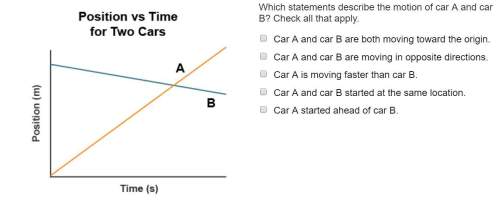Consider an object moving in a plane under the influence of some central
force with correspond...

Consider an object moving in a plane under the influence of some central
force with corresponding potential energy u(r) where r = x2 + y2 in cartesian coordinates.
a. (3 pts) set up the lagrangian for this system (in cartesian coordinates).
b. (2 pts) find the conjugate momenta px and py for this system.
c. (2 pts) set up the hamiltonian, h (x, y, px , py ), for this system.
d. (4 pts) evaluate the poisson bracket h , l where l = xp − yp . what
{z}zyx does this result indicate about the angular momentum?
e. (2 pts) now, set up the lagrangian in polar coordinates for this system.
f. (2 pts) find the conjugate momenta pr and pφ for this system.
g. (2 pts) set up the hamiltonian h r,φ, p , p for this system. (rφ)
h. (4 pts) find the equations of motion from the hamiltonian.
i. (4 pts) evaluate the poisson bracket h, l where l = mr2φ! , ensuring that
everything is in phase space coordinates. what does this result indicate about the angular momentum?
a particle of mass m moves along the x axis under the influence of the potential
u(x)=u0x4e−αx2
where u0 and α> 0 are constants.
a. (4 pts) plot (using a computer) a graph of the potential energy function u(x).
print and attach this plot to the problem. note what values you use for uo
and α. this is meant to give you the shape of the curve.
b. (4 pts) calculate the equilibrium points of the motion and discuss their
stability.
c. (4 pts) calculate the maximum energy of a bound orbit.
d. (4 pts) write an equation for the total energy e in terms of x and x!
e. (5 pts) plot a x! vs x phase portrait of the system. plot several curves in the
regions eemax, and the separatrix curve for e=emax. be sure to label these regions and the separatrix clearly. also, indicate the direction of motion using arrows on the orbits. be sure to note what constants you selected for u0 and α> 0. print this plot and attach it to the problem. you can make the labels of the energy regions and the arrows on the curves by hand.
f. (4 pts) obtain an equation for an orbit very near a point of stable equilibrium and show that the motion is not elliptical. explain based on the equation and phase plot. (hint: think about how you might approximate the exponential piece of the potential energy.)

Answers: 3
Other questions on the subject: Physics

Physics, 21.06.2019 22:30, makayladurham19
25pts the diagram shows the positions of the sun, moon and earth during spring tides, when the high tides are at their highest and low tides at their lowest. what is it about these positions that causes these high and low tides?
Answers: 1

Physics, 21.06.2019 23:30, idjfjcjs584
Edward tolman explained the results of his study by theorizing that the rats were learning about the maze during every trial but they a. were agitated because other groups were getting reinforcement b. could not remember how to demonstrate it without reinforcement c. were not motivated to demonstrate it without reinforcement d. seemed to be too lazy to actually work without reinforcement
Answers: 3

Physics, 22.06.2019 00:00, madskate9993
During physical science, ms. greene challenged her students to produce an energy transformation. james and jill wrapped a 4-inch nail with a coil of fifty turns of wire. they connected one end of the coil to one terminal of a knife switch. they connected the other terminal of the knife switch to the battery. finally, they connected the end of the coil to the other terminal of the battery. james held the tip of a 1-inch nail near the flat end of the 4-inch nail. jill closed the knife switch quickly and then opened it. the 1-inch nail was pulled toward the 4-inch nail. what is the best explanation of why the nail moved? a) electrical energy was converted to mechanical energy in the 1-inch nail. b) the 4-inch nail became an electromagnet and the magnetic force attracted the 1-inch nail. c) the electric current in the 4-inch nail was converted to mechanical energy in the 1-inch nail. d) the 4-inch nail had a positive charge and the 1-inch nail had a negative charge. opposites attracted.
Answers: 1

Physics, 22.06.2019 01:10, atirahmalik2425
If vx = 7.00 units and vy = -7.60 units, determine the magnitude of v⃗ . determine the direction of v⃗ .
Answers: 2
Do you know the correct answer?
Questions in other subjects:

Mathematics, 24.01.2022 23:00


Computers and Technology, 24.01.2022 23:00







Mathematics, 24.01.2022 23:10







